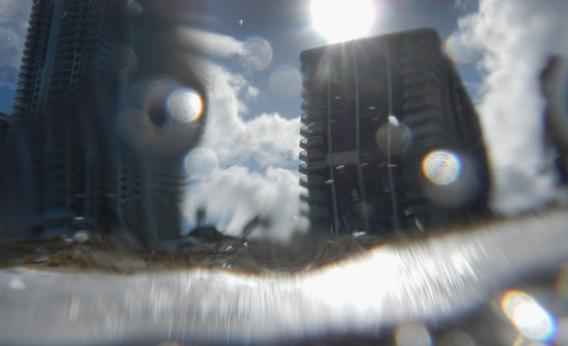Rupert Murdoch made waves on Twitter yesterday by dunking his toe into the climate change debate:
Climate change very slow but real. So far all cures worse than disease. Shale gas huge breakthrough for US. Half carbon of coal and oil.
David Roberts of Grist was incredulous: “Solar panels are worse than drought or rising sea levels?”
Of course not. The problem is that we aren’t building enough of them to significantly slow climate change. And we may not anytime soon, thanks in part to that increasingly cheap shale gas that Murdoch is apparently fond of. (Shale gas is less carbon-intensive than coal, but far more so than renewable energy sources.)
The irony is that the longer we take Murdoch’s advice and wait for an easy fix to climate change, the bigger the problem becomes. Balk at the cost of solar panels now, and in 20 or 30 years Murdoch’s statement could come true: The only remaining solutions to climate change could be downright terrifying.
That’s the thrust of a provocative Popular Science piece today that looks at the potential last-ditch measures the world could take if global warming were to really get out of hand. Here are a few of the proposals:
• Replace the entire Sahara Desert and Australian outback with eucalyptus forests, irrigated with desalinized water. Power the water desalination plants by building a slew of nuclear facilities. (Potential downsides: locust plagues, bird flu outbreaks, elimination of thousands of desert species, $1 trillion pricetag.)
• Dump iron dust into the oceans to breed huge masses of phytoplankton. (Potential downsides: devastation of all other aquatic life, possibility that it might not work anyway.)
• Launch 20 million rockets carrying 16 trillion mirrors into space to deflect the sun’s rays from the earth. (Potential downsides: If it actually works, temperatures will drop precipitously, throwing the global climate system into chaos.)
• Flood the atmosphere with sulfates, either via “stadium-size balloons tethered to oceangoing ships with 12-mile-long hoses” or, more entertainingly, by “dispatching flotillas of Navy warships to fire particle-packed artillery shells into the sky.” (Potential downsides: Can’t think of any!)
Now those are some cures that would be worse than the disease—or at any rate, worse than the disease will be if we start taking some more reasonable steps while we have the chance.
